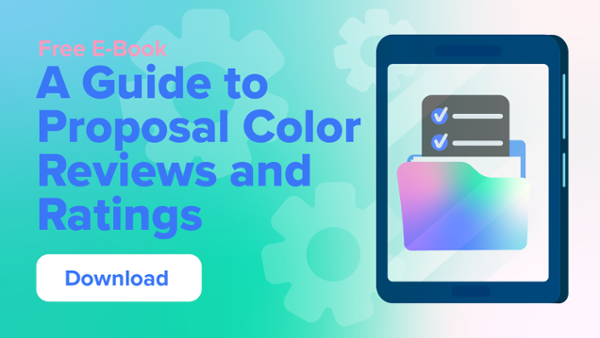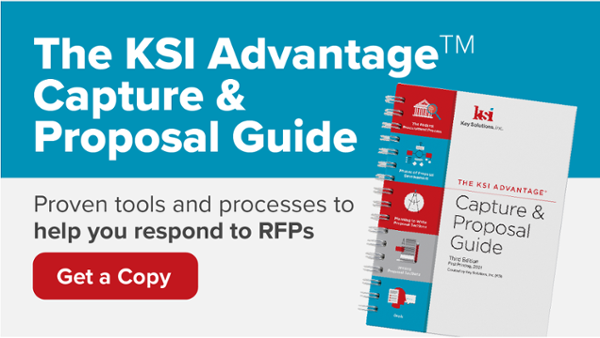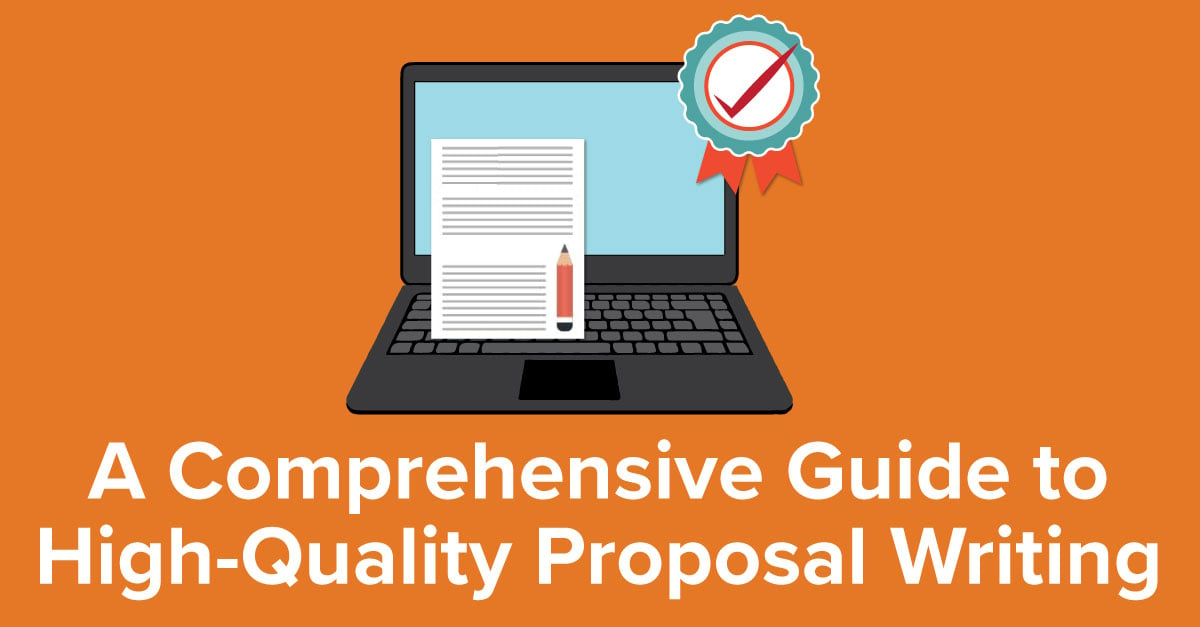As proposal professionals, we are very process and procedure-oriented.
Process gives us control and because of this, the progressive, sequenced structure of color-coded proposal reviews is appealing. But how do you conduct effective reviews with less than one month from kickoff to delivery?
On major proposals where you have a lead time of over 30 days or when you have a draft RFP that can help you jump-start the process, color-coded proposal reviews work. But do they work if you have two weeks or less from kickoff to delivery?
The short answer is yes. Below are a few changes in approach that will allow you to reap the benefits of the proposal review structure while not being held prisoner by the amount of time normally perceived as necessary to conduct effective reviews.
Crisis Action Planning
In the military, "crisis action planning" addresses the unexpected or events that may be anticipated but that unfold more rapidly or in an unexpected manner.
The key thing to remember about crisis action planning is that it doesn’t throw out the planning steps and principles; it accelerates them in a way that seeks to minimize risk to mission accomplishment.
Developing a Proposal Review Plan for a Short Turn Around:
Color-coded reviews are based on accepted principles and are the industry standard for a disciplined, logical process to bring an RFP response to winning completion.
However, when you don't have the luxury of time, like the military’s crisis action planning process, you have to understand the key elements and required results from each level of review in order to adapt to a short turnaround proposal.
Let's start by ensuring we understand the proposal review process before we panic thinking we don’t have the time or resources to complete the required reviews.
Reviews: What do I need to accomplish?
The reviews represent increasing levels of maturity. At each level, the reviewers should be qualified to assess the proposal at its given stage and provide the necessary assessment and guidance to move the proposal to the next level.
Each level of review should be evaluating the presence or absence of win themes and discriminators, compliance with the RFP requirements, and responsiveness to the customer’s needs. The reviews should be somewhat overlapping to ensure connectivity between reviews.
To this end, while you want reviewers geared to each level and each aspect that must be assessed, there is a good case to include someone from the previous level review on the next. At the end of the iterative writing and then review process for each level, the proposal response should be compliant, compelling, and complete.
Reduced time to complete the proposal does not obviate the need to accomplish overall review purposes. Before I offer tips to achieve these purposes in a resource-constrained environment, let’s do a quick review of what is the supposed outcome of each of the color reviews.
What are the goals of each review?
Blue
A Blue Team review ensures that the basic outline of the proposal is correct and complete and that a writer is assigned to each section. The Blue Team review also identifies gaps in information, data, designated SMEs, discriminators, and win themes.
Pink
The Pink Team review has essentially the same responsibility as the Blue Team with respect to compliance, completeness, and being compelling. Any gaps become key action items. However, now the emphasis shifts to the story. Is the story correct? Is the information and data current and relevant? Is the story understandable and does it speak to the RFP requirements and underlying customer needs? Are there any Red Flags that signal a major problem in the proposal that could, if not properly addressed, result in the proposal being non-compliant or just not competitive? Reviewers should be focused on content and not on spelling, except in those instances that reflect inconsistency.
Red
The Red Team review should be done from the perspective of the customer evaluators. Compliance and clarity are the top priority items. How does the document look? Is it easy to evaluate and understand? Is it responsive to customer requirements (does it solve the problem or need?) and does it tell a compelling story? Does it show best value; does it prove that it is technically acceptable? Are there features and benefits stated and documented? Does the technical solution match the price and is it priced to win? Is the solution offered too expensive, and what risks are involved in delivery?
Green
The Green Team review is responsible for ensuring that all pricing information required by the RFP is presented and in the formats prescribed. The team will also ensure that company pricing policies are followed depending on the type of contract (Firm Fixed Price, etc.)
Gold
The Gold Team review document is complete in all sections, all information, all graphics, and fully compliant. It is formatted and looks exactly like it will for submission. The Gold Team reviewers' focus on high-level win themes and discriminators and select aspects of the technical proposal that are considered key to winning the award.
White
The White Team review, often called the White Glove review, is a page-by-page, mostly visual, review of the document designed to catch any obvious errors in printing. The review will check those select items identified at Gold Review for correction. The focus is primarily on compliance items.
Some Techniques to Achieving Review Benefits
The important factor to notice about the foregoing list of reviews is that none of them have an exact amount of time associated with them.
However, each has specific results that need to be achieved. In approaching a proposal that is severely time-constrained, you must recognize that you have to achieve the results associated with each level of review. Whether you call them by the normal color-coded names or not, you still need to have reviews that give you the necessary assessment on how the proposal is progressing toward being compliant, complete, and compelling.
Here are some “shortcuts” that will achieve this without needing to block off large amounts of time. Let me stress that this approach is meant for relatively small/short, quick turn proposals. It is not meant for those that are large in pages, supporting documents, and attachments such as technical tables and scores of resumes.
Also, let me stress that you need/must coordinate this approach with the client since they have to understand it, be comfortable that it will work, and support it with the other proposal stakeholders.
1. Analyze the available time to determine the windows for review, time for formatting, time for input
-
Begin by making a plan that attempts to find time for each of the reviews. Plan backwards from the due date of the proposal. Initially, target to have the proposal done the day before it is due. This step automatically builds in a buffer of 12 to 24 hours. Also allows for a half-day, 4-6 hours for review, including an hour for preparing the debrief and then an hour for the out brief.
-
Recovery should begin immediately after the out brief with the goal that recovery should take no more than 6-12 hours. After the recovery is complete the team should then work on preparing the document for the next level review. This prep should last 18-36 hours. During the constrained proposal prep, do not consume time for formal prep of the documents. This can be postponed in the early reviews; maybe even until after the Red Team review.
-
Using this guide, work back toward a kickoff meeting. This approach allows you to take on a small quick turn proposal
2. Determine when key information is needed; rolling assembling (assembly line) development
Some information may not be needed or even available until later in the proposal process. Spending time running it down too early, or putting in data that will have to be changed or updated later, is not the best use of the proposal team’s energy. Remember that SMEs have day jobs and asking them to provide the same information several times doesn’t help create an atmosphere of cooperation. Adding information when it is needed and ready allows review time to focus on “real” inputs.
3. Do an analysis of resource availability and get senior management buy-in
Client’s personnel generally do ’t shut down all other activities to support the proposal even if it is a short turn. Consequently, SMEs availability may not be at the most convenient times. One proposal I worked on had all the SMEs unavailable for the first week after kick-off because of attendance at an annual conference. The client was aware but did not intervene to make them more available. Taking your timeline to the client management, especially the Capture Manager, is essential to explaining the requirement for access to SMEs and information at key times and to get buy-in.
4. Get the outline out quickly and the more detailed the better
Getting an outline into the hands of the proposal team, SMEs, and client management quickly accelerates the ability to start reviewing. Such action shows urgency and is actually the first step in the review process. If there is information available from previous proposals or other client assets that is relevant, putting this information in also helps jump-start the process by prompting writers and SMEs to begin inputs or gathering information.
5. Blend reviews
A simple approach is to blend reviews. For example, doing a Blue/Pink or a Pink/Red depending on the time and information available allows you to accomplish the purposes of the reviews but saves significant time.
6. Staggered reviews
This approach reviews sections of the proposal as they are completed and does not wait for all sections to achieve the same levels of maturity. The fact is that some sections are easier to complete, and it is more efficient to complete them and then redirect resources to other portions requiring more effort.
7. Rolling reviews
Similar to staggered reviews, rolling reviews eliminate stopping the development of the document or section and allows reviewers to look at snapshots of the document or section. This approach is particularly effective if the same reviewers work with the document from beginning to end because it allows direct follow-up on comments and edits.
8. Use the whole clock by working in sequence and parallel
This suggestion will probably be your least favorite; it is my least favorite but it works well in very time-constrained proposals. The technique is to recognize that reviewers may be available at odd times such as after normal business hours. The approach schedules their reviews in the evening or overnight which allows the proposal time to begin recovery immediately the following morning.
9. Reduce the number of reviewers
Part of the time in the review process is spent digesting the comments. The more reviewers there are involved the more comments there are to digest. Even with the use of software tools that consolidate comments, it takes a lot of time to go through five or six sets of comments, understand them, integrate the ones that will be used, and document the actions.
Using one or two reviewers for the proposal or each section depending on the type of proposal and its organization allows a much more rapid review and recovery. The approach does require the careful selection of experienced and quality reviewers, usually senior SMEs and senior management. It is also useful to keep the same reviewers through all stages with only adding new people for the final review.
10. Be flexible on formatting and editing
Don’t get hung up on having the documents perfectly formatted and edited at each stage of the process. You should try to put out some basic guidelines to minimize the effort required at the end. For example, if the RFP calls for Times New Roman size 12, then inform the writers and ask them to use that. If there is an accepted color scheme, table or figure format, and numbering system, tell the writers at the start.
Don’t tie up valuable development and recovery time by having a desktop publisher go through the document at every stage.
Remember that graphics usually require the most lead time. While they don’t need to be put into the document until toward the end, they do need to be submitted early so that the graphic artists have enough time to do the work and have reviews early enough to catch any errors.
11. Accept that you may have to step into the breach
Finally, you have to keep pressing the process forward. Try not to be obnoxious, but don’t assume that everyone is putting the same priority on keeping to the timeline as you are. Make sure that you carefully monitor the progress and keep the client management informed of any problems that will affect the ability to deliver by the due date and time. For areas that aren’t progressing well, you may be the one that has to fix it.
TAKEAWAY:
The approaches above are ways to achieve good document development and reviews that incorporate the principles embedded in the more formal color-coded review process. These are not substitutes but more adapting to the environment to ensure that at the end of the process, no matter how little time is available, that you achieve a proposal that at the very minimum is compliant and adequately represents the client’s technical solution and capabilities to successfully meet the requirements in the RFP.
This article was originally published in April 2018 and updated on December 10, 2020.
Need help conducting effective proposal reviews?
Book a color team reviewer through our On-Demand Proposal services! Our reviewers provide substantive and actionable comments to help your team produce a winning response.










